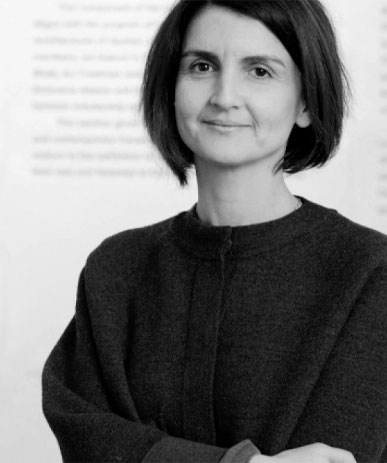CASE STUDIES
Restorative Justice
* For image references, please scroll to the bottom of the page.
Author of case study: Greg Labrosse
Geopolitical location of space:
838 East Derwent Highway
Risdon, Tasmania
Extant? Yes
Architect:
Original architect: unknown (originally built as the Bowen Park Visitor Centre in the 1970s)
Refurbishment: Tim Penny Architecture (2019)
The Tasmanian Aboriginal Centre is an Aboriginal community organisation developed in the early 1970s and funded by the federal government since 1973.
The Tasmanian Aboriginal Centre represents the political and community development aspirations of the Tasmanian Aboriginal community in Hobart and its surrounding areas.
Yes. The service staff at the Children’s Centre act as a liaison between offenders and the court, and offer a variety of programs, addressing the overrepresentation of Aboriginal youth in Tasmanian detention centres.
The spaces where restorative justice takes place within the Centre have not been designed specifically for safe listening. They are multi-purpose rooms that are adapted according to the need.
The Centre’s focus is on delivering services to the Aboriginal community.
The Centre is open to all.
The hand-over of the Risdon Cove site, which included the Bowen Memorial and the original structure of the Bowen Park Visitor Centre, was part of the Aboriginal Lands Bill. The transfer occurred on 11 December, 1995.
The Centre comprises two pyramids joined by a glazed link. The Pyramid Refurbishment project provided an education facility for the Tasmanian Aboriginal Centre to deliver community education and training programs for the Tasmanian Aboriginal community. This incorporated multipurpose rooms with the Aboriginal Children’s Early Learning Centre. The new entry insertion is a linear, copper-clad form to counterpoint with the original pyramids. The timber-lined lobby provides a light-filled public entry and presentation space for cultural artefacts in an informal meeting space.
As per its website, the TAC is an Aboriginal community organisation developed in the early 1970s and funded by the federal government since 1973. It was incorporated as the Aboriginal Information Service in November 1973 and changed its name to Tasmanian Aboriginal Centre (TAC) in August 1977, and officially to Tasmanian Aboriginal Corporation in 2016, but is still known as the Tasmanian Aboriginal Centre. The objectives of the corporation are to provide benevolent relief of poverty, sickness, destitution and distress to address disadvantage among Aboriginal and Torres Strait Islander (“Aboriginal”) people.
Some of its main achievements include:
Some of the services it provides include:
In coordination with Hobart’s Department of Health and Human Services department, in recent years the Tasmanian Aboriginal Centre has organised bush walks as part of its Youth Diversion Program, in order to offer young offenders a peaceful space for conferencing with their parents and the municipal caseworkers.

is an author, speaker, columnist, and podcaster in the fields of architecture and decorative arts. She is completing her MA in Art History at Concordia University, Montréal, and holds a Bachelor of Commerce with a major in Marketing from John Molson School of Business. She studied Industrial Psychology in Los Angeles, California. Sicotte is the author of two published books on design (2015, 2018) published by Les Éditions Cardinal.

is a Colombian PhD candidate in the Department of Art History at Concordia University. She has a background in architectural design and community activism and holds a master’s degree in Building and Urban Design from the Bartlett School of Architecture in London, England. Her interests focus on socially-engaged art, social movements, collaborative activism in post-conflict scenarios, collectively-produced art, and art produced in relation to the built environment.

is a PhD candidate in Humanities at Concordia University. His research focuses on spatial agency, social aesthetics, youth narratives, and graphic representations of urban memory. He has published on the relationship between children, play, and public space in Cartagena, Colombia. He has also worked as an editor on literary projects, including Territorio Fértil, which received the María Nelly Murillo Hinestroza award for Afro-Colombian literature.

is Associate Professor and Canada Research Chair in Architectures of Spatial Justice (Tier 2) at the Peter Guo-hua Fu School of Architecture at McGill University, Montréal, Québec, Canada. Her research interests include low-income housing and participatory design, civil protest and urban design, and campus landscapes and race. Her publications include the co-edited book, Orienting Istanbul (2010) and solo-authored book, Istanbul Open City (2018).

is an artist and a professor of Art History at Concordia University. Her work focuses on women and the history of the built environment, urban landscapes, research-creation, and oral history. She has published on the spatial history of the suffrage movement, public art, gardens, and the politics of urban change. In addition to her research on the spaces of restorative and transitional justice, she is leading an oral history project on the urban memories of diverse Montrealers.

is Associate Professor in the Department of Theatre at Concordia University, Montreal (Quebec, Canada). He is also the second co-director of Concordia’s Centre for Oral History and Digital Storytelling. His latest publications explore listening in the context of post-conflict performances of memory. For instance, see ‘Facilitating voicing and listening in the context of post-conflict performances of memory. The Colombian scenario.’ In: De Nardi, S., Orange, H., et al. Routledge Handbook of Memoryscapes. Routledge: London. (2019), and his article ‘Not being able to speak is torture: performing listening to painful narratives’. International Journal of Transitional Justice, Special Issue Creative Approaches to Transitional Justice: Contributions of Arts and Culture. (March, 2020)